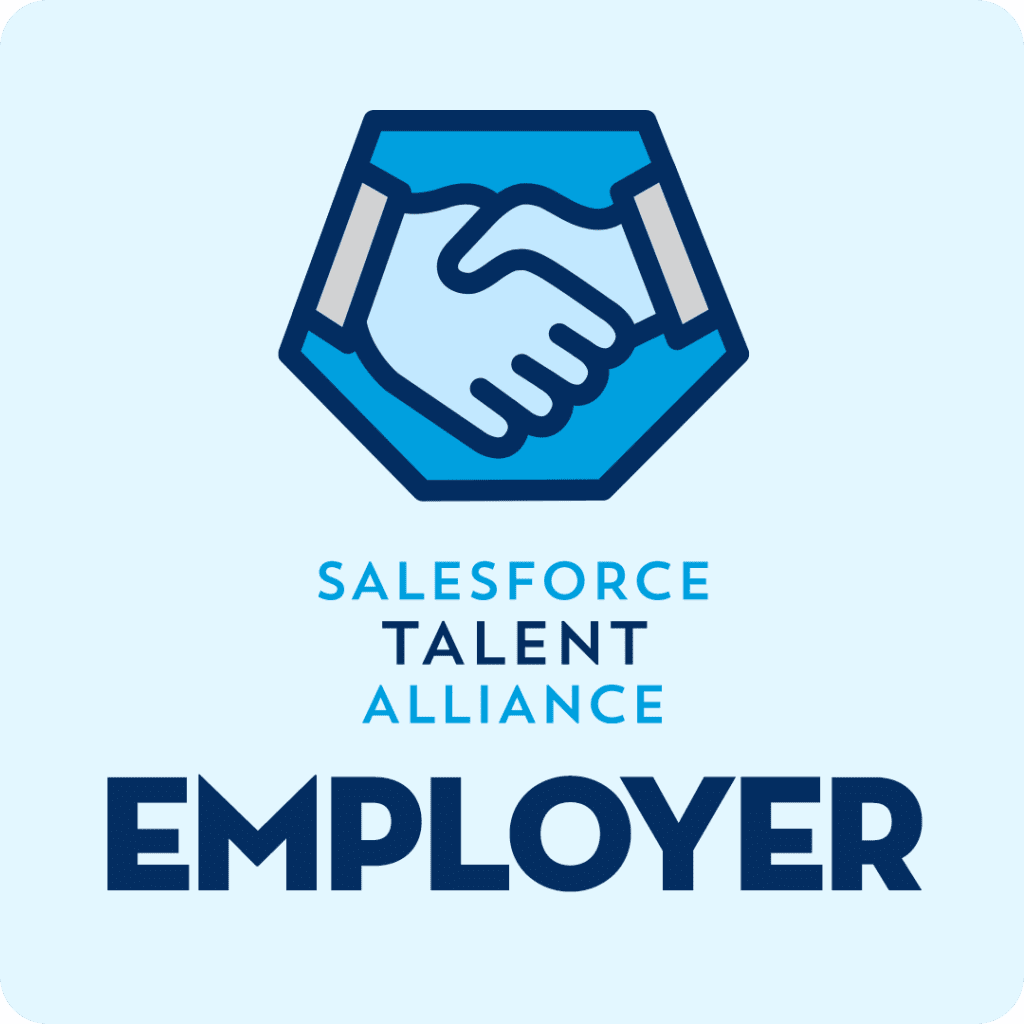Episode two of our Tech’s Leading Women vodcast launched today. The six-part series features a range of leading voices from the tech industry, talking about the issues they’ve encountered during their career and providing practical advice for how organizations can overcome them.
This week’s episode was hosted by Nabila Salem, President at Revolent, who spoke with Stuart Mills, Vice President of Trailhead & Ecosystems at Salesforce, Olly Wynyard Gonfond from PWC’s Indigenous Consulting, and Barbara Gottardi from Vanguard, an experienced CIO and non-executive director with over 20 years of experience.
Between them, they asked (and answered!) the question—are we looking in the right place for talent? Here’s three key takeaways from their discussion:
Myths around tech
This week’s episode started with getting past some of the misconceptions that exist in the industry at present, particularly when it comes to diversity. Stuart began with an interesting point about what people in tech look like. “I think the first myth that should be broken down is that everyone looks like me! What I mean is that it’s just white men is a myth. There is incredible diversity in technology, it needs to improve and increase, absolutely. But it’s a myth what a typical tech person looks like, and that includes whether you’ve come from any background as well. What I’ve discovered in my work is very much that people can come from any background—philosophy degrees as much as computer science degrees, are really important.â€
Olly agreed, adding: “There are a lot of misconceptions about the type of person that’s right for tech, and unfortunately, a lot of misconceptions about what diversity and inclusion really mean and how they become a reality in our workplaces. And in my experience, those sort of misconceptions come from really deep-seated misunderstandings. I don’t believe that people get out of bed with a mission for misogyny or racism every morning, but their lack of exposure, their lack of awareness, their lack of cultural safety means that their ignorance can have real and damaging sort of effects on the people that are trying to make it into this industry.â€
Barbara added that it’s not just the people working in tech that have changed, but it’s also the roles available too. She added: “I think girls quite like the idea of STEM careers, but they don’t want to stay in front of the computer and code all day. And I think that’s what has really changed in technology. It is no longer just someone in a room with code, but it’s much bigger than that. If you think of all the transformation projects that we’re doing in many organisations, the key to success is actually having cross-functional teams where business and technology become just one team, serving a customer. I think the skills are evolving and they’re very different. And I think not being just a coder to focus on the latest cool technology becomes an advantage, because that’s not necessarily what the customers really want.â€
Say it like you mean it
Barbara then moved the conversation onto the value of authenticity for encourage a better balance when it comes to diversity. “I think the message has to be meant,†she said. “It’s easy to say, ‘I want to increase my diversity’, but if you don’t live by the values, you’re going to get found out very soon. I’m sure we’ve all been in a situation where someone wants to drive their diversity and inclusion stream because that’s going to look good on them, but they haven’t got a clue why they should be doing that. And that will never work. I think, in my experience, it’s not something that one person can do. I think it’s a thing that one person can drive if they strongly understand and believe that that’s the right thing to do. But then you need to really encourage and empower every single person in the organisation to make a difference.â€
Olly was quick to share examples of prejudice he’d witnessed as a fair-skinned aboriginal employee in Australia, applying to identified roles for those from First Nations. “I’ve seen people disappointed that the interviewee wasn’t “more black”, what’s the point of us having a target for Aboriginal people, if it doesn’t look like we’ve got Aboriginal people? It’s a very narrow-minded view of why you’re doing those things.†Essentially, any in-roads towards levelling up have to be more than just a policy, but a genuine cultural change within your organization based on the benefits that diversity brings, rather than what it looks like.
Finding talent
Finally, the conversation moved onto how to proactively find the talent that technology so desperately needs from those diverse groups. After Nabila talked about a policy of “sending the elevator back down†for senior executives to help those at the beginning of their journey earlier in the conversation, the talk moved on to the other different ways to get involved within the tech community to help inspire change.
Stuart spoke about the way Salesforce’s groups reach out into different communities, but also the importance of them all working together in the end. He said: “We talk a lot about employee resource groups in the context of different minority groups particularly, and trying to really think through networks of people. For example, black and Asian minorities within the UK and all over the world. I think, with all of these different communities, it’s about asking how does that adjacency move? And then I think I’d almost consider the network of thinking, how can we create programmes that bring people together from different communities of people?â€
Olly concluded with perhaps the perfect point that ultimately, no matter how we do it, the onus is on all of us to drive that change. “Now we have a whole layer of technology that exists below the surface. As much as I would love to be able to say, head to this website or listen to this podcast and understand this technology, ultimately I think the responsibility does return back to us to reach out into those communities and into those places where the visibility and the accessibility isn’t great.â€
You can listen to episode two of Tech’s Leading Women here.










